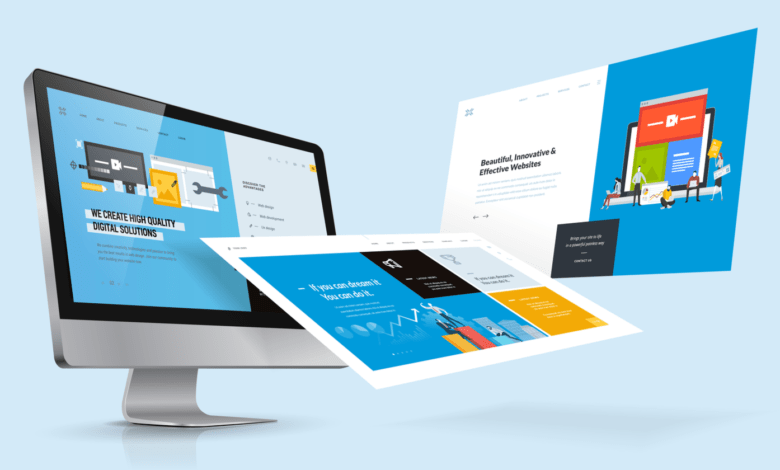The Dos and Don’ts of Effective Custom Web Design

In today’s digital landscape, a website is often the first point of contact between a business and its potential customers. A well-designed website not only creates a lasting impression but also plays a crucial role in driving conversions and achieving business goals. Custom web design offers a unique opportunity to create a tailored online experience that resonates with your target audience and sets you apart from the competition. However, effective custom web design requires a delicate balance of strategy, creativity, and technical expertise. In this blog post, we’ll explore the dos and don’ts of effective custom web design in Melbourne to help you create a website that captivates, engages, and converts.
The Dos:
Define Your Goals and Target Audience
Before embarking on a custom web design project, it’s essential to clearly define your goals and target audience. Understanding your business objectives, whether it’s increasing online sales, generating leads, or enhancing brand awareness, will guide the design process. Additionally, researching and identifying your target audience’s preferences, behaviors, and pain points will help you create a user-centric design that resonates with them.
Prioritise User Experience (UX)
Effective custom web design in Melbourne revolves around providing an exceptional user experience (UX). A well-designed website should be intuitive, easy to navigate, and visually appealing. Incorporate user-centered design principles, such as clear information architecture, consistent layout and navigation, and responsive design to ensure optimal usability across various devices and screen sizes.
Establish a Strong Visual Identity
Your website is an extension of your brand, and its visual identity should be consistent with your overall branding strategy. Carefully consider elements such as color schemes, typography, imagery, and layout to create a cohesive and memorable visual experience that reinforces your brand’s personality and values.
Embrace Simplicity and Clarity
While it’s tempting to pack your website with various features and elements, effective custom web design often lies in simplicity and clarity. Focus on presenting your content in a clean and organised manner, using whitespace effectively and minimising distractions. This approach enhances readability, improves navigation, and ensures that your key messages and calls-to-action stand out.
Optimise for Search Engines
In the digital age, a significant portion of website traffic comes from search engines. Ensure that your custom web design incorporates search engine optimisation (SEO) best practices, such as using descriptive titles, meta descriptions, alt tags for images, and a logical site structure. This will improve your website’s visibility and help potential customers find you more easily.
The Don’ts:
Neglect Responsiveness
With the increasing prevalence of mobile devices, neglecting responsive design is a grave mistake. A non-responsive website can lead to poor user experiences, high bounce rates, and lost opportunities. Ensure that your custom web design in Melbourne is fully responsive, providing an optimal experience across various devices and screen sizes.
Sacrifice Usability for Aesthetics
While aesthetics are important, they should never compromise usability. Avoid design elements or layouts that hinder the user’s ability to navigate or find the information they need. Strike a balance between visually appealing design and intuitive functionality, ensuring that form follows function.
Ignore Accessibility
An inclusive and accessible website is not only ethical but also a legal requirement in many regions. Effective custom web design should take into account accessibility guidelines, such as providing alternative text for images, ensuring proper color contrast, and enabling keyboard navigation. This ensures that your website is usable by individuals with disabilities and caters to a wider audience.
Overlook Load Times
Slow-loading websites can significantly impact user engagement and conversions. Optimise your website’s performance by minimising HTTP requests, compressing images and files, leveraging browser caching, and implementing a content delivery network (CDN). Regularly monitor and optimise your website’s load times to ensure a smooth and efficient user experience.
Neglect Ongoing Maintenance and Updates
A website is a living entity that requires regular maintenance and updates. Neglecting to update your website’s content, plugins, and security measures can leave it vulnerable to security breaches, compatibility issues, and a decline in search engine rankings. Establish a plan for ongoing maintenance, content updates, and security patches to keep your website running smoothly and effectively.
Final Words
Effective custom web design is a delicate balance of strategy, creativity, and technical expertise. By following the dos and avoiding the don’ts outlined in this blog post, you can create a website that not only captivates and engages your target audience but also drives conversions and supports your business goals. Remember, custom web design in Melbourne is an ongoing process, and regularly evaluating and optimising your website based on user feedback and analytics is crucial for long-term success.



